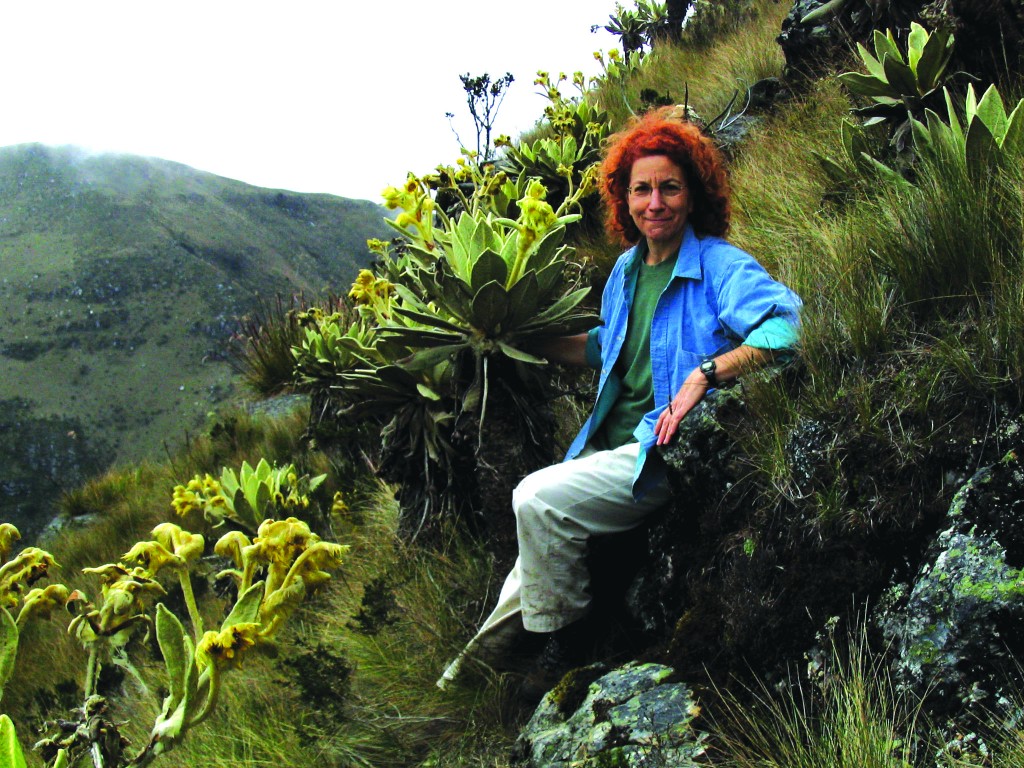Looking Back: April 2011
Posted in Photography on December 25 2011, by Ann Rafalko
In April we celebrated Spring Color Week as a rainbow of blooms burst forth.

Inside The New York Botanical Garden
Posted in Photography on December 25 2011, by Ann Rafalko
In April we celebrated Spring Color Week as a rainbow of blooms burst forth.
Posted in Science on May 11 2011, by Amy Litt
Three Garden scientists participated in an international collaboration that sequenced the genome of the lycophyte Selaginella moellendorffii. Lycophytes, known as ground pines or club mosses, are an ancient lineage of vascular plants with small, scale-like leaves that lack the ability to make seeds but produce copious spores. They represent an intermediate evolutionary stage between mosses, which do not have conducting and support (vascular) tissue, and plants such as conifers or flowering plants, which have vascular tissue and complex leaves and protect their embryo in seeds. The genome project was undertaken to see what clues might lie in the DNA to the increasing adaptation of plants to land and the increasing complexity that came along with it. The results were published last Friday in the prestigious journal Science.
Dr. Amy Litt, Director of Plant Genomics and Cullman Curator, Dr. Barbara Ambrose, Cullman Curator and member of the Genomics Program, and Dr. Ken Karol, of the Lewis B. and Dorothy Cullman Program in Molecular Systematics, were part of a group of scientists that identified and described the genes of this important species. Pinpointing the location and sequence of specific types of genes in the genome allowed them to compare the genes of Selaginella with the genes of other plant species that have had their genome sequenced, which include algae, a moss, and several flowering plants. The group, led by Dr. Jody Banks at Purdue, found that some genes are present only in flowering plants and not in the moss or Selaginella; these genes might be needed for the development of flowers and fruits, which are only found in flowering plants. Other genes are found in Selaginella and flowering plants but not in the moss, and these probably function in the increased adaptation to land shown by vascular plants in contrast to mosses.
Dr. Ambrose is now studying some of these genes in more depth in the Pfizer Lab, focusing on a group that is known to control important developmental processes in flowering plants. We think that changes in these genes may have played crucial roles in land plant evolution, perhaps underlying the evolution of key adaptive features, so it will be very exciting to find out what these genes do in Selaginella.
Posted in Window Garden Wednesday on March 2 2011, by Plant Talk
Ed. note: Here at the Garden, we are surrounded by plants and knowledgeable plant people, which means that even the average Garden employee/cubicle dweller tends to soak up a lot of information about how to best care for our plants. To many at the Garden, this immersion, combined with a nascent love of plants plus easy access information has driven us to practice what we preach in the form of tending a windowsill garden. On occasional Wednesdays, we’ll introduce you to some of the Garden’s many windowsill gardeners. We hope you enjoy this look at what our window gardeners grow.
 Who are you and what do you do at the Garden?
Who are you and what do you do at the Garden?
Amy Litt, Director of Plant Genomics and Cullman Curator. I study how plant genes differ among species and how those differences in genes are responsible for differences in plant form and function. In other words I study the genetic basis of plant diversity. I also teach and mentor graduate, undergraduate, and high school students.
What kind of plants do you have in your windowsill garden?
Mostly ferns, and one tiny “living stone.” The latter is a type of desert-adapted plant that grows in the driest parts of Africa. It has almost no stem and very fleshy leaves which store water; it only has 2-4 leaves at a time, and it grows in rocky soil that covers it up to the tops of the fat leaves, to keep it cooler from the hot sun. There are some for sale in the Garden Shop.